Climbing snowy mountains is an adventure, but high-altitude expeditions can be full of extreme challenges. From the thin air that endangers oxygen supply to the bitter cold capable of freezing skin in minutes, climbers need to be in top physical and mental shape to endure. Although conventional altitude adaption strategies and cold protection systems are fundamental, a low-key newcomer has emerged to the market — red light therapy (RLT). Is this new technology the key for alpinists looking to build endurance, boost recovery time, and improve resilience?
Dive into the dangers of climbing to the top and discover how red light therapy can help overcome high-altitude climbing.

Altitude Sickness: A Major Threat on the Mountain
Heading upward into the void has a grave risk — altitude sickness. As climbers rise, the availability of oxygen diminishes, causing the body to exert itself less efficiently. The principal dangers at high altitude are acute mountain sickness (AMS) and its severe complications—high-altitude pulmonary edema (HAPE) and high-altitude cerebral edema (HACE).
Acute Mountain Sickness (AMS): The Common Foe
AMS is the most common problem climbers encounter when they ascend too rapidly. Symptoms include:
- Headache
- Nausea
- Dizziness
- Fatigue
Red light therapy could help improve cellular oxygen utilization, but acclimatization is the best prevention. Research indicates that RLT improves mitochondrial function, possibly enabling climbers to continue making energy in low-oxygen conditions[1].
High Altitude Pulmonary & Cerebral Edema (HAPE & HACE): Deadly Complications
If AMS goes untreated, it can progress into more serious, life-threatening conditions like:
- HAPE: Fluid builds up in the lungs, causing shortness of breath and cough.
- HACE: Swelling in the brain, resulting in confusion, loss of motor coordination, and unconsciousness.
Cold-Related Injuries: Battling the Freeze
Hypothermia: The Gradual Descent into Danger
Hypothermia is when the body’s core temperature falls too low. Symptoms can include shivering, confusion, slowed breathing, and even loss of consciousness. Could red light therapy help? There are few studies suggesting that RLT can increase blood flow, which might help the body retain heat better. It wouldn’t replace insulated clothing but could help with recovery after exposure by improving circulation and avoiding long-term tissue damage.
Frostbite: Degrees of Tissue Damage
Frostbite occurs when the skin and underlying tissues freeze. The severity varies:
- First-degree: Reddish skin and numbness.
- Second-degree: Blisters form.
- Third-degree: All layers of skin are affected.
Because RLT is known to accelerate wound healing, it may help tissues heal faster and reduce inflammation for mild frostbite cases, making it a useful recovery tool.
Environmental Hazards: Beyond the Cold
Intense UV Radiation: The Invisible Enemy
The atmosphere is thinner at high altitudes, allowing more UV radiation to impact the skin. Sunburn and chronic memory loss to the skin are very common issues.
Ironically, red light therapy enhances skin health and reduces oxidative stress. Just because you had a pre-exposure RLT session does not mean you can skip sunscreen, but it may help to strengthen skin against UV-induced damage.
Dehydration and Electrolyte Imbalance: The Silent Risk
Cold can camouflage thirst, triggering dehydration, muscle cramps, and fatigue. Staying properly hydrated is key, but RLT may provide indirect benefits by going a long way to improve blood flow and boost cellular energy, making it so that climbers will be more resilient to the effects of dehydration.
Altitude Adaptation Strategies
Stepwise Ascent Protocol
The best way to become accustomed to high altitudes is to gradually ascend. This includes:
- A slow ascent, to give the body time to acclimatize.
- Rest days at certain altitudes.
- Breathing strategies to maximize oxygen consumption.
Although these are tried and tested strategies, red light therapy may serve as a performance enhancer, enabling climbers to recuperate quicker following each leg of the climb.
Potential Benefits of Red Light Therapy for Climbers
Red light therapy isn’t just the domain of biohackers and wellness junkies—it’s been catching on with athletes and endurance adventurers for its potential to enhance recovery and improve performance[2].

Enhancing Recovery and Performance
For climbers, muscle fatigue is where the battle lies, particularly after days of heavy trekking. RLT has been shown to:
- Reduce muscle soreness
- Improve health and disease resilience by augmenting mitochondria function
- Speed up tissue repair
That means climbers may recover more quickly overnight and wake up with lower fatigue levels, which may provide an advantage in multi-day expeditions.
Combating Fatigue and Improving Circulation
Extreme fatigue is prevalent while at high altitudes, where oxygen is low. Red light therapy improves circulation, which helps deliver oxygen and nutrients to tissues[3]. This might also change the game from the perspective of energy generation in hypoxic conditions.
Pharmacological Prevention with Acetazolamide
Climbers commonly take acetazolamide or Diamox to assist acclimatization and reduce symptoms of acute mountain sickness (AMS). Though effective, it may also cause side effects, including tingling sensations and increased frequency of urination. Have you ever thought about whether red light therapy might be available as an aid or alternative support for this? Also, as red light therapy improves energy and decreases oxidative stress, it might add to the effectiveness of acclimatization drugs and cause better outcomes over time.
Cold Protection Systems for Climbers
The Three-Layer Clothing System
- Base Layer (Moisture Wicking) – This is the layer that sits closest to your skin and sweeps moisture away from the skin to prevent moisture accumulation that could lead to chilling. Choosing moisture-wicking materials, such as merino wool or synthetic fabrics, is best.
- Insulating Layer (To retain body heat) – The middle layer captures body heat, to keep you warm. Alternative options are fleece, down, or synthetic insulation depending on conditions and moisture levels.
- Outer Shell (Weather Protection) – The outer layer protects you from wind, snow, and moisture. A good high-end waterproof and breathable jacket (like Gore-Tex) is best for keeping the external elements out but for allowing sweat to escape.
As the temp in freezing conditions changes quickly, this system helps regulate temp and even prevents heat loss, which can make a huge difference for climbers keeping dry and warm.
Emergency Rewarming Techniques
Immediate rewarming is paramount if a climber has hypothermia or cold-related injuries:
- Warm Fluids & Blankets – Gradual raises in core temperature can also be achieved with warm liquids and insulated blankets.
- Skin-to-Skin Contact — If a hypothermic person is placed inside a sleeping bag with another warm individual, heat will transfer rapidly.
- Heated Packs & Devices – Battery-powered heating pads or hot water bottles can be applied to areas such as the chest, neck, and groin to assist in rewarming.
- Red Light Therapy? – RLT helps with post-exposure recovery, improving blood flow and facilitating tissue repair, which can lessen the impact of excess cold exposure.
Staying warm is about smart layering, but knowing how to rewarm quickly can save your life when the temperatures are extreme!
Final Thoughts: Is Red Light Therapy a Mountaineer’s Secret Weapon?
Red light therapy isn’t a miracle cure for the specific challenges to your body presented by extreme environments, but its general benefits in terms of recovery, circulation, and cellular health make it a worthy addition to a climber’s toolkit.
Here’s how RLT might be incorporated into a mountaineer’s regimen:
✔ Pre-climb: Tissues stronger, more blood circulating, less oxidative stress.
✔ On expeditions: Fighters fatigue and muscle soreness (when using portable devices).
✔ After climbing: Helps recover from hypothermic conditions and altitude stress.
As technology advances, portable red light therapy devices could be a must-have for high-altitude climbers as one of the means to augment their travels through dangerous terrains while managing the risks posed by harsh environments. To conclude, red light therapy may not reduce the summit load, but it can keep you stronger for the climb, recover you faster, and help you go higher than ever!
References
- Glass GE. Photobiomodulation: The Clinical Applications of Low-Level Light Therapy. Aesthet Surg J. 2021 May 18;41(6):723-738. doi: 10.1093/asj/sjab025. Erratum in: Aesthet Surg J. 2022 Apr 12;42(5):566. doi: 10.1093/asj/sjab396. PMID: 33471046.
- Borges LS, Cerqueira MS, dos Santos Rocha JA, Conrado LA, Machado M, Pereira R, Pinto Neto O. Light-emitting diode phototherapy improves muscle recovery after a damaging exercise. Lasers Med Sci. 2014 May;29(3):1139-44. doi: 10.1007/s10103-013-1486-z. Epub 2013 Nov 21. PMID: 24258312.
- Foley J, Vasily DB, Bradley J, Rudio C, Calderhead RG. 830 nm light-emitting diode (led) phototherapy significantly reduced return-to-play in injured university athletes: a pilot study. Laser Ther. 2016 Mar 31;25(1):35-42. doi: 10.5978/islsm.16-OR-03. PMID: 27141153; PMCID: PMC4846838.



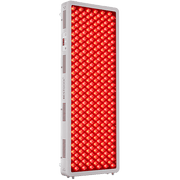









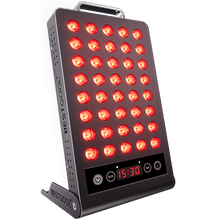
 Small
Small
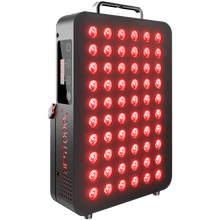
 Moderate
Moderate
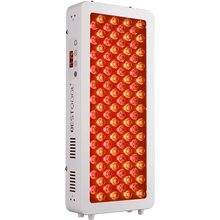
 Moderate
Moderate
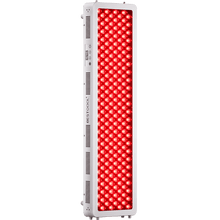
 Moderate
Moderate
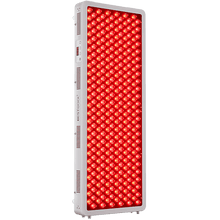
 Full
Full



